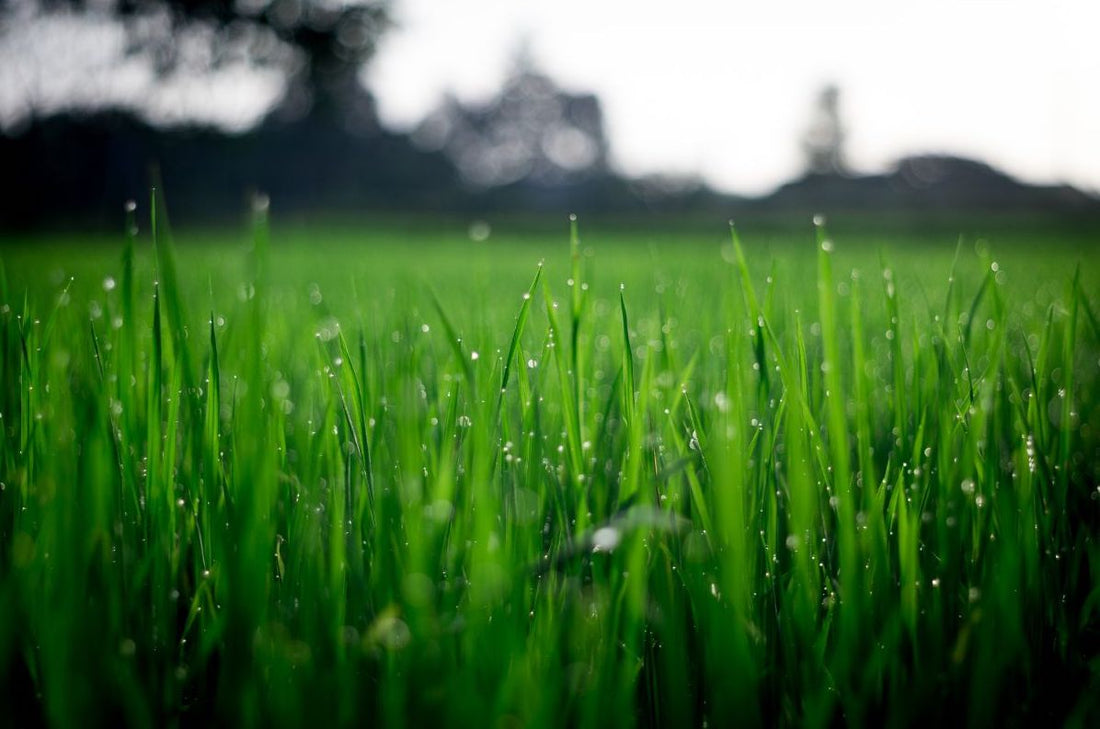Wondering when is the best time to fertilize lawn before or after rain? At Lawn Synergy, we've got you covered.
As experts in lawn care, we know that timing your fertilization is crucial for a lush, green lawn. The right timing ensures your fertilizer is effectively absorbed, providing your grass with the necessary nutrients without any wastage.
If you're curious about the best time to fertilize your lawn—before or after a rain shower—you've come to the right place.
In this article, we'll dive deeper into the perfect timing for fertilizing your lawn with imminent rainy weather. So, if you're ready to transform your lawn, continue reading to discover our expert insights and practical tips.
What this article covers:- When Should You Fertilize Your Lawn?
- Our Recommendation
- When to Apply:
- What Happens If I Fertilize My Lawn After Heavy Rain?
- Using Fertilizer Before Rain
- What is the Best Temperature to Fertilize Your Lawn?
- Did the Rain Wash Away My Fertilizer?
- Fertilizing a Wet Lawn with Granular Fertilizer
When Should You Fertilize Your Lawn?
When it comes to timing, fertilizing before rain can be beneficial if done correctly. Light to moderate rain can help the fertilizer seep into the soil, reaching the grass roots more effectively. However, too much rain can wash away the fertilizer, rendering your efforts futile.
It's best to check the weather forecast and aim for light to moderate rain to maximize the benefits. On the other hand, applying fertilizer after heavy rain such as a major storm where we get 2-4 inches of rainfall can lead to runoff, where the fertilizer is washed away before it has a chance to penetrate the soil.
If you’re wondering about fertilizing during the different seasons, the best time to fertilize your lawn is during spring, summer, and fall. During these periods, grass is actively growing and can readily absorb nutrients.

Our Recommendation
The best lawn fertilizer for spring can provide the nutrients your lawn needs to thrive after winter dormancy. Similarly, the best lawn fertilizer for winter preparations can help your lawn stay healthy through the colder months.
Our collection of lawn fertilizers are suitable for all seasons, ensuring your lawn thrives year-round. We highly recommend our 10-0-20 Emerald Lawn Fertilizer. Our 10-0-20 Emerald Lawn Fertilizer with 10% iron and added GreenTRX is a high-quality, nutrient-rich fertilizer perfect for maintaining the health and beauty of your lawn.
Our Emerald fertilizer is specially designed with a balanced mix of nitrogen and potassium, and it doesn't include phosphorus. This makes it particularly suitable for tall fescue, centipede, St. Augustine, and other turf grasses that thrive on higher potassium levels.
The Emerald fertilizer features 45% slow-release technology, ensuring nutrients are gradually and consistently delivered over time.
This helps avoid over-fertilization and minimizes the risk of fertilizer burn, making it safe for various lawn types. Additionally, this formulation strengthens the lawn and aids in disease and stress prevention.
Furthermore, GreenTRX, unlike typical lawn fertilizers, nourishes both the grass and the soil. Recognizing soil as a living habitat needing organic matter, GreenTRX replenishes the soil, providing essential nutrients for microbes.
Healthy soils, enriched by GreenTRX, offer a stronger foundation for grass growth, regardless of weather conditions.

When To Apply:
- Tall Fescue Lawns: May-July
- Kentucky Bluegrass: April-September
- St. Augustine Lawns: May-December
- Centipede Lawns: March-August
By following these application guidelines, you can ensure that your lawn will receive the right amount of nutrients they need to thrive and maintain their lush, green appearance.
Remember to always follow the instructions on the label and apply the fertilizer evenly across your lawn for best results. We recommend 4-5 lbs. of fertilizer Per 1,000 sq. ft.
What Happens If I Fertilize My Lawn After Heavy Rain?
Applying fertilizer after heavy rain can be problematic. Based on our observations, heavy rainfall can lead to runoff, where the fertilizer is washed away before it has a chance to penetrate the soil.
This not only wastes fertilizer but can also harm the environment by contaminating waterways. When the fertilizer washes away, it fails to deliver the essential nutrients to your lawn, leading to poor growth and potentially contributing to water pollution.
Therefore, it's crucial to avoid fertilizing immediately after heavy rain to ensure the nutrients can be absorbed properly by the soil.
Using Fertilizer Before Rain
Using fertilizer before rain can be beneficial if done correctly. Mild rain can help the fertilizer seep into the soil, reaching the grass roots more effectively. The faster the fertilizer gets watered in, the faster it can begin working.
However, too much rain can wash away the fertilizer, rendering your efforts futile. It's best to check the weather forecast and aim for light to moderate rain.
By doing so, you ensure that the fertilizer has enough time to dissolve and penetrate the soil without being washed away by excessive water.
This approach maximizes the efficiency of your fertilization efforts, promoting healthier and more robust grass growth.

What is the Best Temperature to Fertilize Your Lawn?
The best time of day to fertilize the lawn is in the morning or late afternoon when temperatures are cooler. Fertilizing during the heat of the day can stress your lawn. Aim for temperatures between 55-85°F for optimal results. However, as long as it is watered in, any temperature would be just fine.
These cooler periods allow the fertilizer to be absorbed without the risk of evaporation or burning the grass.
Additionally, cooler temperatures reduce the likelihood of the fertilizer causing any damage to the lawn, ensuring that the nutrients are effectively utilized by the grass.
Did the Rain Wash Away My Fertilizer?
If you've fertilized before a heavy downpour, you might wonder if the rain washed away your efforts. If the rain was intense, there's a chance your fertilizer was carried away.
Light to moderate rain, however, should help integrate the fertilizer into the soil. In the case of heavy rain, it's advisable to inspect your lawn to determine if reapplication is necessary.
This inspection will help you decide if additional fertilization is needed to ensure your lawn receives the necessary nutrients. Wait at least two weeks to see if the lawn is looking better or if it seems to be running out of food. It will depend on how much water the storm produced and how much of the fertilizer has washed away.
Fertilizing a Wet Lawn with Granular Fertilizer
Fertilizing a wet lawn can be tricky. From our experience, granular fertilizer can clump if the grass is too wet, making it harder to distribute evenly.
It's best to wait until the grass is damp but not soaked to ensure even application. This condition allows the fertilizer to spread more uniformly across the lawn, ensuring that all areas receive the necessary nutrients.
Proper distribution prevents over-fertilization in certain spots and ensures that the entire lawn benefits from the fertilization process.

Conclusion
The best time to fertilize the lawn depends on the type and intensity of the rain. Light to moderate rainfall can help the fertilizer work its way into the soil, while heavy rain can wash it away.
At Lawn Synergy, we're dedicated to helping you achieve the lawn of your dreams. Explore our range of high-quality fertilizers and lawn care products to find the perfect solution for your lawn's needs. Transform your lawn with Lawn Synergy and enjoy a lush, green landscape all year round.
If you want to learn more, why not check out these articles below:
- Best Time to Fertilize Lawn Before or After Mowing
- Best Time of Day to Fertilize Lawn
- Best Lawn Fertilizer After Aeration
- Best Way to Grow Grass
- Best Weed and Feed for Bermuda Grass
- Best Fertilizer for Yellow Grass
- Best Fertilizer for Bahia Grass
- Best Fertilizer for Tall Fescue Grass
- Best Weed and Feed for St. Augustine Grass
- Best Fertilizer for Centipede Grass in South Carolina
- Best Grass Seed Fertilizer
- Best Fertilizer for Mondo Grass
- Best New Lawn Fertilizer
- Best Organic Fertilizer for Lawn
- Best Weed and Feed for Lawns

